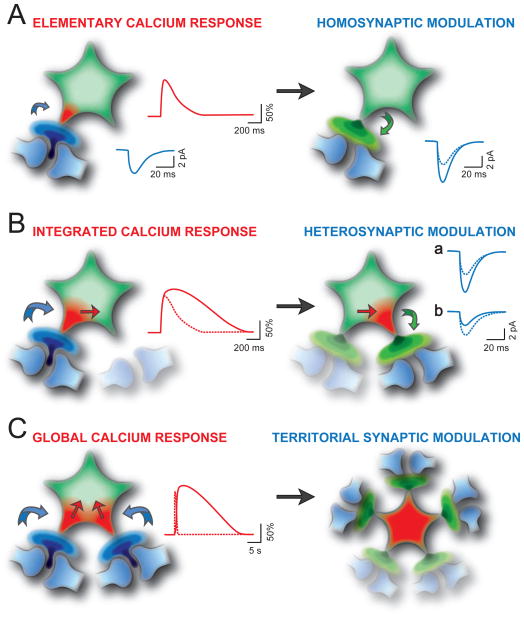Figure 2. Synaptic Modulatory Actions of Gliotransmitters Depend on Integration by Astrocytes of the Ca2+ Changes Evoked by Different Levels of Neuronal Activity.
(A) Low levels of synaptic activity (blue arrow, left) evoke rapid, spatially restricted Ca2+ elevations at an astrocytic process (red trace) resulting in a gliotransmitter release that locally modulates synaptic transmission (green arrow, right) (Jourdain et al., 2007; Perea and Araque, 2007; Pascual et al., 2012; Santello et al., 2011; Panatier et al., 2011). The change in synaptic efficacy due to gliotransmitter-mediated regulation of the probability of release is illustrated as an increase in the mean amplitude of excitatory postsynaptic events(dashed and solid blue line).
(B) Ca2+ elevations evoked at an astrocytic process by an intense activity of an individual synapse diffuse to a nearby process (red arrow) to trigger gliotransmitter release that affects nearby synapses (right). The red superimposed traces are the integrated Ca2+ response (solid line) and the elementary Ca2+ response (dashed line, same as solid line in A). As a result of this astrocyte modulatory action, synaptic transmission (solid blue line) can be either potentiated (Navarrete and Araque, 2010) or depressed (Zhang et al., 2003; Pascual et al., 2005; Andersson et al., 2007; Serrano et al., 2006)(dashed blue line in a and b, respectively). As in (C), the focus of the phenomenon being described is indicated in colour, while the elements that are not the focus are greyed out (but are not necessarily inactive).
(C) Multiple Ca2+ events at different processes evoked by simultaneously active synapses are spatially and temporally integrated (left) resulting in a global, long lasting Ca2+ elevation that can affect synaptic transmission in the territory of individual astrocytes (right) (Henneberger et al., 2010). The global Ca2+ response (solid line) and the integrated Ca2+ response (dashed line, same as solid line in B) are reported. Note the different time scale of Ca2+ traces in (A), (B) and (C).

